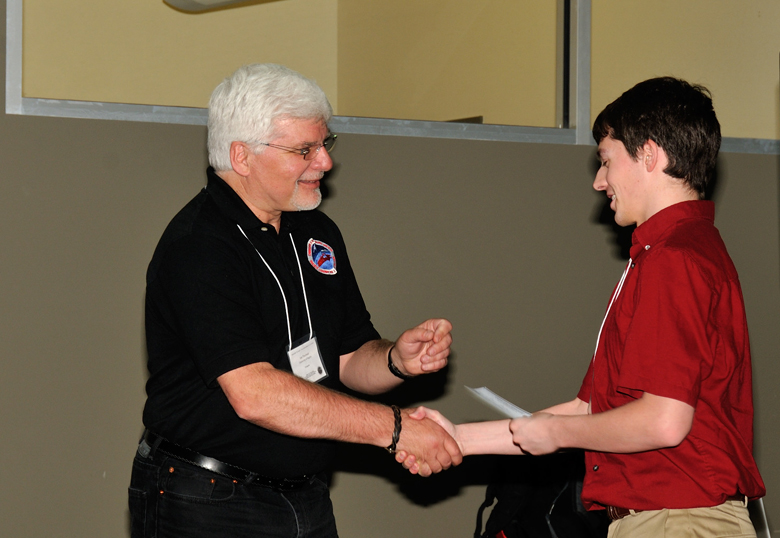Undergraduate student Jason Beaver claimed the Best Student Oral Presentation Award as the University of Lethbridge’s Alberta Terrestrial Imaging Centre (ATIC) was prominent at the 37th Canadian Symposium on Remote Sensing, held recently in Winnipeg.
Both undergraduate students and senior faculty members attended the annual conference as ATIC continued to build on its legacy as a national leader in the science of remote sensing.

“Over the years, the research work of ATIC faculty members and students has been recognized with various awards and our group has earned its reputation as a leader both nationally and beyond,” says Dr. Derek Peddle, geography professor and ATIC co-director. “Jason’s award this year is especially noteworthy because I believe it is the first time an undergraduate student has won first place in this category.”
Beaver’s award-winning presentation, BRDF Effects on Vegetation Indices and Leaf Area Index Derivations in Agricultural Crops, was part of the Agricultural Applications in Remote Sensing Session. Student presentations covered many topics, and almost all involved masters or PhD level students from across the country. Graduate students from the University of British Columbia and Carleton University (Ottawa) placed second and third respectively.
“There’s no undergraduate award category, but we work at the highest levels and Jason’s presentation reflected that in the results that he achieved and his ability to deliver it effectively,” says Dr. Craig Coburn, geography professor and Beaver’s undergraduate honours thesis supervisor. “Supported by the NSERC CREATE AMETHYST program, Jason is one of our first students in the new BSc in Remote Sensing degree program.”
Beaver’s presentation explored new ways to use remote sensing in agriculture. The study assessed wheat and peas at different times in the growing season, deriving improved information on plant health, growth status and ultimately yield. Conducted in collaboration with Dr. Anne Smith at Agriculture and Agri-Food Canada, Lethbridge Research Centre, this research used the University of Lethbridge Goniometer System (ULGS-II) that allows measurements at different angles. The ULGS-II was designed and built by Coburn and Dr. Scott D. Noble (University of Saskatchewan) and is widely recognized as one of the best in the world. A wheat field can look different if you look at it from different locations or angles – the same is true for remote sensing instruments on drones, airplanes or satellites. The ULGS-II allowed Beaver to test this extensively and discover optimal measurement approaches. This allows recommendations on best practices in agricultural remote sensing in terms of time of day for measurement, angle of sensing and also how these vary throughout the growing season. The results are important in ensuring the best possible agriculture information can be obtained from seeding to harvest time, and is intended to benefit farmers and how they monitor crops.
In addition to Beaver’s honour, Peddle was awarded the 2016 Canadian Remote Sensing Society Silver Medal, recognizing excellence in mid-career achievement in remote sensing in Canada.
ATIC’s presence at the conference was not limited to individual awards. Four faculty members from ATIC, along with students ranging from undergraduate to PhD levels and post-doctoral researchers, also offered presentations. In total, ATIC personnel gave 12 presentations involving 12 student and staff researchers as co-authors with ATIC faculty. ATIC personnel also organized a total of five special sessions, ranging in topics from Agriculture and Wetlands in Alberta, to LiDAR technology and GeoSpatial Education.
“This year’s outcomes continue what’s become a legacy of prestigious awards to ATIC personnel and students,” says Peddle. “These results further illustrate the strong leadership profile ATIC has earned in the remote sensing community.”
